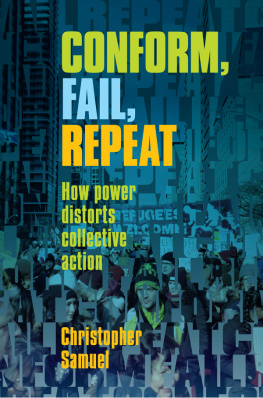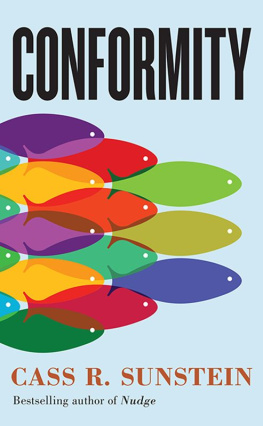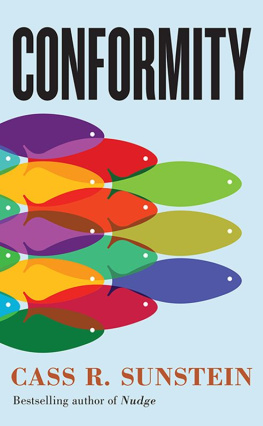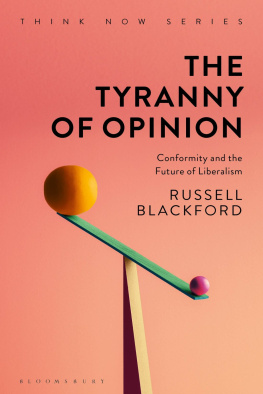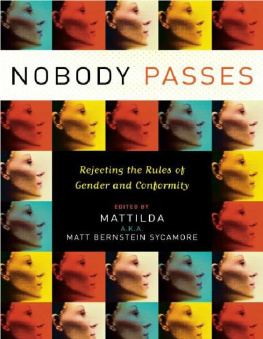First published 2014 by Transaction Publishers
Published 2017 by Routledge
2 Park Square, Milton Park, Abingdon, Oxon OX14 4RN
711 Third Avenue, New York, NY 10017, USA
Routledge is an imprint of the Taylor & Francis Group, an informa business
Copyright 2014 by Taylor & Francis.
All rights reserved. No part of this book may be reprinted or reproduced or utilised in any form or by any electronic, mechanical, or other means, now known or hereafter invented, including photocopying and recording, or in any information storage or retrieval system, without permission in writing from the publishers.
Notice:
Product or corporate names may be trademarks or registered trademarks, and are used only for identification and explanation without intent to infringe.
Library of Congress Catalog Number: 2013012616
Library of Congress Cataloging-in-Publication Data
Serban, George, 1926-
The mask of normalcy : social conformity and its ambiguities / George
Serban.
pages cm
Includes bibliographical references and index.
ISBN 978-1-4128-5269-2
1. Conformity. 2. Compliance. 3. Adjustment (Psychology) I. Title.
HM1246.S47 2013
303.32dc23
2013012616
ISBN 13: 978-1-4128-5269-2 (hbk)
The individuals conformity to the social norms of organization and behavior has become a topic of much debate in view of the complex and somewhat divisive changes experienced lately by our society. Social conformity has been considered by psychosocial scientists as the back-bone of proper social adjustment and of community integration, and also as an indicator of a healthy and stable society. As ymile Durkheim, the father of sociology, concluded a long time ago, social facts require social constraints which are unfortunate restrictions on the individuals freedom. He surmised that it represents a small price paid to avoid societal disorganization and ultimately anarchy. It works as a supra-individual social force regulating the interaction between people. People are inclined to act in agreement with the social constraints. Society as a rule tends to constrain people to behave in a manner which they would not follow if uncompelled. There are constraints related to the material structures of society like urbanization, technologies, communications, and external structural constraints induced by kinship, family ties, or outer social framework. There are also constraints of moral nature and cultural ones. All these social agents and social structures play their role in the formulation of social conformity.
From a sociological point of view, a smoother functioning of society could be achieved when people have incorporated as self-constraints the most significant social constraints directing their regular interactions with others. In this case, people harmonize their behavior with that of others facilitating an easier and more satisfying social conduct. According to Norbert Elias, a sociologist theorist, a higher regulated and differentiated pattern of self-restraint occurs in societies where there is a relatively stable monopolization of physical force and of the central organs of society.ruthless manner and grossly violate peoples civil liberties, compelling them to conform automatically to the authorities demands. Otherwise, they are subject to harsh punishments.
This brings into focus the role of social conformity in a free society where it is part of the social interactive processes. Here social conformity acts as a mediator between the norms and regulatory acts of the state that protect the social rights of all citizens by reinforcing their freedom and enforcing respect for their civil rights. In reality, as we will see, the loose and twisted interpretation of social conformity has led to the ongoing debate regarding its fairness and validity. It is seen as inadequate in dealing with the social conditions brought about by the policies imposed by the government. Some of these decreed policies have affected specific segments of the population with regard to what they perceive to be a serious encroachment on their civil rights and free expression.
This issue of social conformity had been part of a larger, classical study dealing with the interaction between the society and the individ-uals social character. In their book The Lonely Crowd, David Riesman et al. forwarded the hypothesis that for society to function properly it has to ensure a degree of conformity from its population that has to be willing to act in a manner acceptable to all members of the community. They found that this condition does occur based on an assumed link between the existing social system and the social character of the people defined as a product of the experience of that group. They concluded that there are three types of social characters: the tradition directed, the inner directed, and the other directed. According to them, each of these social characters evolved to a great extent in a specific type of social organization and order. The tradition-directed type belongs to societies with high-growth potential which fostered the tendencies to follow the traditions of the family, kin and clan, together with the cultural rituals in its members. The individuals conformity seems to be commanded largely by the social power of his family and relatives in that social organization. In case of misbehavior, the tradition-directed individual feels guilt and/or shame.
The inner-directed type is the product of a transitional growth, in a society in which there is constant expansion of the production of goods, and of exploration, where people show high personal mobility. There are a few subtypes of inner-directed character depending on the region and the religion practiced. The inner-directed type who is considered very stable is expected to maintain the fragile balance between his wants and the coping with community pressures. A sense of guilt acts as the emotional constraint for behaving inappropriately in response to inner impulses.
The other-directed type emerged in a society showing signs of a population decline, but otherwise with material abundance and interest in leisure-time activities. They are the people who want the approval of others and look to receive direction from contemporary others. They draw their signals, or cues from a wider circle of resources than the tradition- or inner-directed types. The authors consider the other-directed as cosmopolitan since the line separating the familiar from the strange is loose and blurry. Whenever they trespass the social rules, they tend to experience diffuse anxiety.
The researchers viewed these social character types as abstractions that were arrived at from studying the actual character traits of individual personalities, from which the common elements forming the social character were extracted. They also remarked that a society may change faster than the social character or vice versa. This incompatibility between the required behavior by society and the inadequate social characters could act as a factor for change in the social order. Social characters that were well adapted to their tasks could find themselves under pressure from newer, better adjusted persons. The latter would replace them while the former would be relegated to subordinate positions, creating resentment or rebellion.





